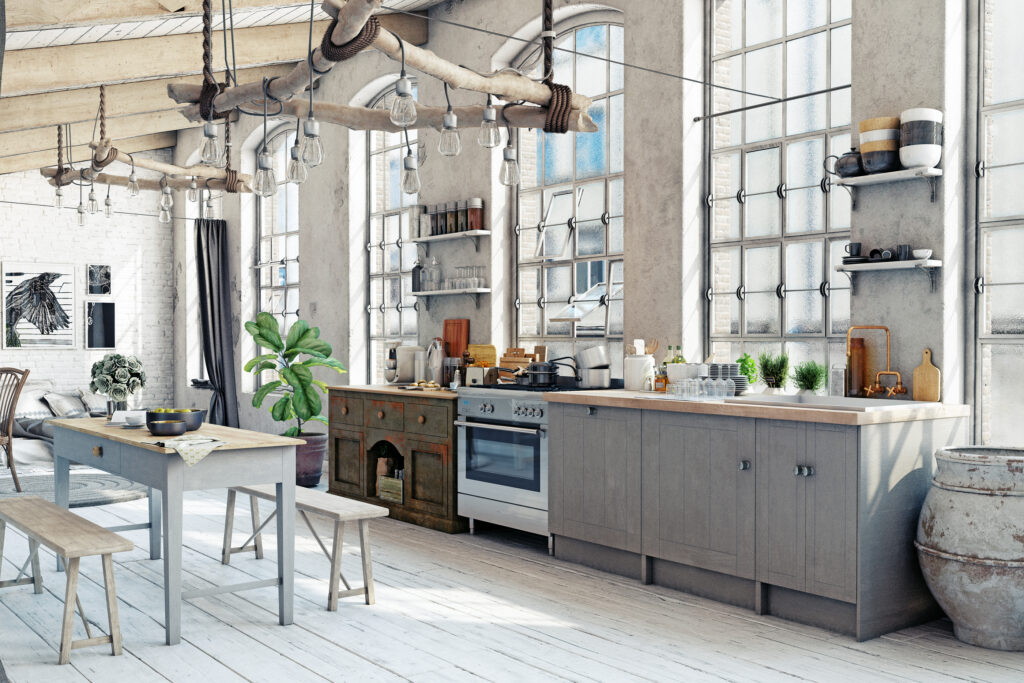Thinking of renovating that kitchen? Well, you would hardly ever be lonely! Kitchen renovations in Australia are among the most popular home improvement projects, and for good reasons. A new, totally working kitchen can basically change houses and make everyday life just that much easier for you. But have you ever thought about doing a sustainable renovation?
The more aware people become of environmental issues, the more Aussies are looking for ways to reduce their carbon footprint, even in home improvement. We’ll see the best sustainable materials that you could use in your kitchen renovation so that you can work in a beautiful living space that is environmentally friendly. From recycled countertops to energy-efficient appliances, let’s just say we’ve got the kitchen on! So, kick back with your cuppa, and let’s go!
Recycled and Reclaimed Materials: Little-Known Charm for Your Kitchen
Probably the best and most famous method for sustainable kitchen renovation is by way of recycled and reclaimed materials. Apart from cutting down on waste, these materials also euthanize the soul of your kitchen. For instance, recycled glass countertops are made from crushed glass mixed with some binding agent, creating a breathtakingly different surface that sparkles in the light. Reclaimed wood is taken from old buildings or furniture and can be converted into kitchen cabinets, floors, or even a feature wall and accentuation. Sustainable builders often recommend these materials because they conserve natural resources and reduce new production requirements. Plus, they add little halves of history and charm to your kitchen that nothing brand new can ever have.
There are several advantages to going this way.
- These materials are eco-friendly, usually cheaper than new, and create an appealing look that will no doubt incite discussion at your next supper party.
- On the other hand, they could do a little maintenance, such as sealing from time to time for the countertop or wood treatment for the wood.
The major downside is sourcing, as those materials are often not stocked on the shelves of your nearest hardware store. But don’t let that discourage you! With a bit of hunting, you can find them at salvage yards, used building supply shops, or even on the internet in markets throughout Australia. A little adventure well worth the eco-friendly reward.
Sustainable Wood Options: Beauty with a Conscience
When it comes to wood, a whole slew of sustainable options exists, all looking good and doing some good. Start with wood certified by the Forest Stewardship Council (FSC) that guarantees it was harvested from responsible forest management for biodiversity and the fair practices supported. Bamboo is another big contender; it is technically a grass and grows at lightning speed, making it a renewable star. It is also pretty strong and hard, suitable for flooring, cabinets, or even countertops, with a warm natural feel to complement any kitchen style.
You then also have cork, which comes from the bark of cork oak trees without harming the life of the tree, and rubberwood, taken from rubber trees that have ceased producing latex. These woods aren’t just good for the planet; they’re good-looking and built to last. Imagine bamboo floors standing up to spills and foot traffic, or FSC-certified cabinets tailored just the way you want them to be—whether that’s sleek and modern or a bit of classic down under. Choosing sustainable wood means giving your kitchen a face-lift while helping keep our forests alive for the future generation.
Eco-Friendly Countertops: Style Meets Sustainability
Countertops are basically the heart of any kitchen, and the good news is there are a bunch of sustainable choices that won’t forsake style or durability. Some of the more popular choices are recycled glass countertops—they are gorgeous, tough, and easy to clean, coming in plenty of colours so you’ll be able to match any vibe. Then there’s concrete, which can be made green by mixing in fly ash, a by-product of coal combustion. That reduces the need for new cement, which is responsible for a solid chunk of carbon emissions, plus you can finish it in ways that make it a total statement piece.
Sustainable quartz takes the lead just behind. This is usually made by mixing recycled pieces with an additional process, which is a green one. This is non-porous, so it does not fight stains and germs with much fuss, and it is also available in patterns that can brighten up any kitchen. When selecting these countertops, think about the big picture—where they were made, how they were shipped, and how long they will last. Materials sourced locally will have a reduced carbon footprint because transportation emissions are lessened. Selecting a brand that reinforces green alternatives is the next step. It really comes down to maximising style and practicality with the least negative effect on the environment.
Energy-Efficient Appliances and Fixtures: Small Changes, Big Impact
Okay, so appliances and fixtures are not “materials” in the true sense, but they are must-have facets in any truly sustainable kitchen. Energy Star-rated appliances are a bit of a good thing—a label that is earned by meeting strict criteria regarding efficiency as laid down by the Australian government, thereby reducing energy consumption and cost while having minimal impact on the environment.
Other small changes can have a big impact.
- Low-flow faucets can save water without making you feel like you are showering your dishes in a trickle of water.
- Then, there is LED lighting—looking great; it saves energy and lasts longer than a lifetime.
While organising the renovation, constantly consider how to integrate the above in the larger picture. Water-conserving dishwashers, energy-efficient refrigerators, and even an induction cooktop that is quicker to heat up and less power-consuming with respect to power than gas or electric stove marketing accounts. This is going to make your kitchen work smarter, not harder, actually conserving resources in the process while coming up with an awesome breakfast.
Working with a Kitchen Renovator
To pull off a sustainable kitchen reno that checks all the boxes, synergy with a kitchen renovator who gets it. A top-notch renovator will see you through choosing appropriate materials and ensuring their correct installation, sourcing locally whenever possible to minimise transportation emissions. Through them, you will be able to incorporate energy-efficient appliances and fixtures so smoothly your green kitchen won’t be just green by name in theory but green in practice too.
When shopping for the right guy, look for someone who has previous experience in sustainable work. Also, when you ask how they usually approach eco-friendly renovations, are they familiar with reclaimed wood or recycled glass? Are they updated in the latest green building techniques? Some of them might belong to green building organisations or even have certificates that prove their commitment to sustainability. Screen your renovator well, and then you can look forward to a kitchen that reflects well on your cup in the morning.
Wrapping It Up
There you have it—plenty of sustainable materials and ideas to help make your kitchen renovation a win-win for both you and the environment. Whether it’s recycled glass countertops catching the light, bamboo flooring that stands the test of time, or energy-saving appliances that keep the bills in check, there are so many options. Pursue these with an intelligent kitchen renovator, and a stylish, functional kitchen that’s now a renowned one for the planet awaits you. Why don’t you give it a go and put a sustainable touch on your next reno? We’d love to hear your ideas, future plans, or yet-to-be-created stories about renos—the floor is open!


